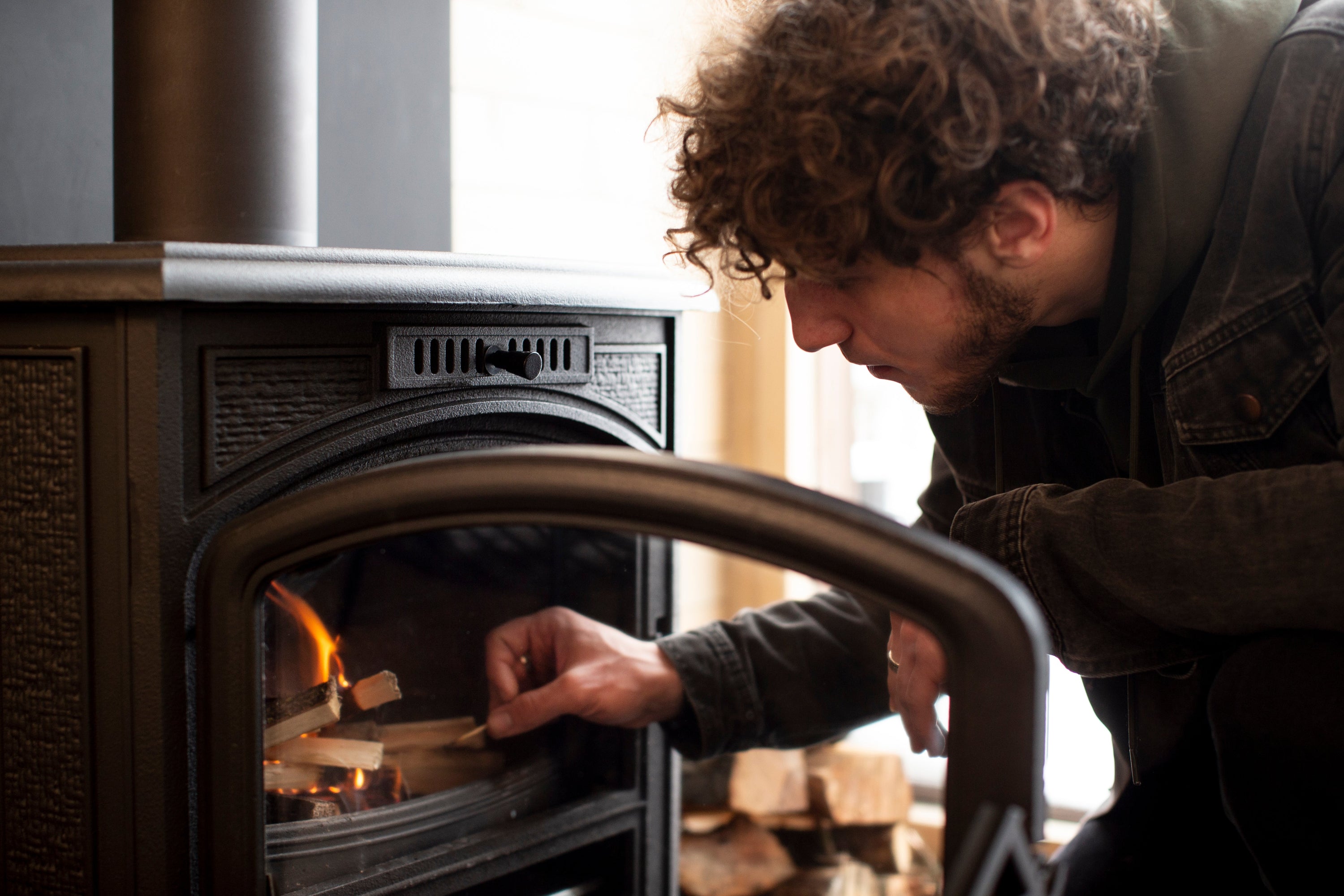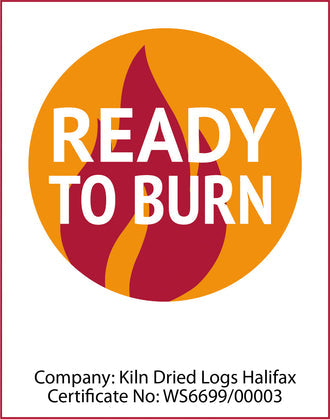
Explore the Cost to Install a Log Burner in UK
Installing a log burner can transform your home's heating efficiency while creating a cozy, inviting atmosphere. However, understanding how much does it cost to install a log burner is crucial for budgeting this significant home improvement project. Installation costs typically range from £800 to £4,000, depending on your existing setup, chosen stove, and installation complexity.
The total expense encompasses multiple components beyond the stove itself, including flue systems, hearths, building regulations compliance, and professional labor. Whether you have an existing chimney or need a complete new installation will dramatically impact your final bill. This comprehensive guide breaks down all associated costs, helping you make an informed decision about your log burner investment.
Average Log Burner Installation Costs
Understanding the baseline costs for log burner installation helps establish realistic budget expectations. The average installation typically costs between £1,200 and £3,000 for a standard setup, though prices can vary significantly based on specific circumstances.
A basic log burner suitable for average-sized rooms costs between £300 and £1,500. Mid-range models with enhanced efficiency ratings and attractive designs range from £1,500 to £3,000. Premium log burners featuring advanced technology, superior materials, and exceptional heat output can cost £3,000 to £8,000 or more.
Professional installation labor typically accounts for £500 to £1,500 of the total project cost. Certified installers must comply with building regulations, ensure proper ventilation, and complete necessary safety inspections. This expertise is essential for safe operation and often required for insurance and warranty coverage.
Additional components significantly impact total costs. A suitable hearth costs £200 to £800, depending on materials and size requirements. Flue pipes and fittings range from £300 to £1,000, while chimney modifications or repairs can add £500 to £2,000. Building control fees typically cost £150 to £300, ensuring compliance with local safety standards.
How Much to Install a Log Burner with a Chimney
Installing a log burner with an existing chimney typically offers the most cost-effective approach, as the primary structure already exists. However, even with a chimney present, several factors influence the total installation cost.
Chimney condition assessment is the crucial first step, typically costing £100 to £300 for professional inspection. Many older chimneys require structural repairs, cleaning, or relining before safe log burner installation. Minor repairs might cost £200 to £800, while major structural work can reach £2,000 to £5,000.
Flue lining represents a significant consideration when determining how much to install a log burner with a chimney. Most installations require stainless steel flexible flue liners, costing £300 to £800 depending on chimney height and diameter requirements. This lining ensures proper ventilation and prevents dangerous gas leaks into living spaces.

The hearth modification often requires attention even with existing chimneys. Building regulations mandate specific hearth dimensions and materials for log burner safety. Modifying or replacing existing hearths typically costs £300 to £1,200, depending on chosen materials and required structural changes.
Professional installation with an existing chimney generally costs £800 to £2,000 total, assuming minimal chimney repairs. This includes labor, basic materials, building control notification, and safety certification. However, unexpected chimney issues discovered during installation can significantly increase final costs.
How Much to Install a Log Burner Without a Chimney
Installing a log burner without an existing chimney requires creating an entirely new ventilation system, significantly increasing project complexity and costs. Understanding how much to install a log burner without a chimney helps homeowners prepare for this substantial investment.
Twin-wall flue systems represent the standard solution for properties without chimneys. These insulated steel systems can route through internal walls, external walls, or roofs, providing flexible installation options. A complete twin-wall system typically costs £800 to £2,500, depending on height, complexity, and quality specifications.
External wall installations often offer the most straightforward approach, requiring a horizontal flue exit through an exterior wall before connecting to a vertical external chimney. This method typically costs £1,500 to £3,500 for materials and installation, including necessary wall modifications and weatherproofing.
Roof penetration installations provide optimal performance but increase complexity and costs. Creating roof openings, installing proper flashing, and ensuring weathertight seals requires skilled craftsmanship. Total costs for roof installations typically range from £2,000 to £4,500, including structural modifications and safety systems.
Building regulations compliance becomes more complex without existing chimneys, often requiring detailed plans and multiple inspections. Additional fees for design consultation, building control applications, and extended approval processes can add £300 to £800 to project costs.
Factors That Affect Installation Costs
Multiple variables influence final log burner installation costs, making accurate budgeting challenging without professional assessment. Understanding these factors helps homeowners anticipate potential expenses and make informed decisions.
Property age and construction type significantly impact installation complexity. Victorian and Edwardian properties often feature existing chimneys but may require extensive repairs or modifications. Modern properties typically lack chimneys but offer easier structural modifications and better insulation for flue systems.
Room size and heating requirements determine appropriate stove sizing and specification. Larger rooms require higher-output stoves, increasing equipment costs. Additionally, rooms with high ceilings or poor insulation may need more powerful units, affecting both purchase and installation expenses.
Accessibility challenges can dramatically increase labor costs. Installations requiring scaffolding, roof work, or restricted access routes add significant time and complexity. Properties with limited parking or narrow access routes may incur additional charges for equipment transportation and setup.
Local building regulations and planning permissions vary by area, potentially affecting approval processes and costs. Listed buildings or properties in conservation areas often require specialized consultations and materials, increasing overall project expenses. Some areas mandate specific installer certifications or additional safety features.
Chosen stove efficiency and environmental ratings affect long-term costs beyond initial installation. Higher-efficiency units cost more upfront but provide better fuel economy and reduced maintenance requirements. DEFRA-approved stoves suitable for smoke control areas may cost more initially but ensure regulatory compliance.
Additional Costs to Consider
Beyond basic installation expenses, several additional costs can significantly impact your log burner project budget. Planning for these potential expenses prevents unwelcome surprises during installation.
Structural modifications sometimes become necessary during installation, particularly in older properties. Floor reinforcement for heavy stoves might cost £200 to £1,000, while ceiling modifications for flue routing can add £300 to £800. Wall removal or modification for optimal stove placement typically costs £500 to £2,000.
Electrical work requirements vary depending on stove specifications and room layout. Installing dedicated electrical circuits for stove fans or lighting typically costs £200 to £500. Properties requiring consumer unit upgrades or extensive rewiring might face additional expenses of £500 to £2,000.
Decorating and restoration costs often follow installation completion. Hearth surrounds, wall treatments, and room redecoration typically cost £300 to £1,500 depending on chosen finishes and room size. Professional interior design consultation might add £200 to £800 for optimal aesthetic integration.
Insurance modifications may be required following log burner installation. Some insurers mandate specific safety features or annual servicing agreements, potentially increasing ongoing costs. Informing insurance providers about installations is essential for maintaining coverage validity.
Annual servicing and maintenance represent ongoing operational costs. Professional chimney cleaning and stove servicing typically costs £100 to £300 annually, ensuring safe operation and maintaining warranty coverage. Regular maintenance prevents costly repairs and ensures optimal efficiency throughout the stove's lifespan.
DIY vs Professional Installation
While DIY installation might seem cost-effective, log burner installation involves complex safety, legal, and technical considerations that typically require professional expertise. Understanding the implications of each approach helps homeowners make informed decisions.
Professional installation ensures compliance with building regulations, safety standards, and manufacturer warranties. Certified installers possess specialized knowledge about ventilation requirements, structural modifications, and safety protocols. Professional installation typically includes comprehensive insurance coverage, protecting homeowners from liability issues.
DIY installation appeals to skilled homeowners seeking cost savings, potentially reducing labor expenses by £500 to £1,500. However, DIY projects still require building control notification, professional inspections, and compliance certification. Additionally, incorrect installation can create serious safety hazards, including carbon monoxide poisoning and fire risks.
Building regulations require competent person certification for log burner installations, typically achievable only through professional installers. DIY installations usually require separate building control inspections, adding time and complexity to project completion. Insurance companies may void coverage for improperly installed appliances, creating significant financial risks.
Manufacturer warranties often specify professional installation requirements, potentially voiding coverage for DIY projects. Professional installers typically offer installation warranties, providing additional protection against defects or issues. These warranties can prove valuable for addressing problems during the crucial first operating year.
The complexity of modern building standards, flue calculations, and safety requirements makes professional installation increasingly advisable. Experienced installers can identify potential problems, recommend optimal solutions, and ensure long-term system reliability. The peace of mind provided by professional installation often justifies the additional expense.
How to Save Money on Log Burner Installation
Strategic planning and informed decision-making can significantly reduce log burner installation costs without compromising safety or quality. Several approaches help homeowners achieve their heating goals while managing budget constraints.
Timing installations during off-peak seasons often yields cost savings through reduced demand for installer services. Summer and early autumn installations typically cost 10-20% less than peak winter installations. Planning ahead allows time for competitive quotes and careful product selection.
Obtaining multiple quotes from certified installers ensures competitive pricing while maintaining quality standards. Quotes should include detailed breakdowns of materials, labor, and additional costs for accurate comparison. However, selecting installers based solely on price can lead to quality issues and additional expenses.
Choosing appropriate stove sizes prevents overspending on unnecessarily powerful units while ensuring adequate heating capacity. Professional heat calculations help determine optimal specifications for specific rooms and usage patterns. Oversized stoves waste fuel and money, while undersized units provide inadequate heating.
Purchasing stoves during sales periods or end-of-season clearances can yield significant savings on equipment costs. Many retailers offer substantial discounts on previous year models or during promotional periods. However, ensure chosen models meet current efficiency and safety standards.
Preparing installation sites beforehand can reduce labor costs by minimizing contractor time requirements. Clearing access routes, removing furniture, and completing basic preparations allows installers to focus on technical aspects. However, avoid attempting structural modifications without professional guidance.
Combining installations with other home improvement projects can achieve economies of scale and reduce overall costs. Coordinating log burner installation with renovations, decorating, or heating system upgrades can optimize contractor scheduling and minimize disruption.
Conclusion
Installing a log burner represents a significant home improvement investment that can provide decades of efficient heating and enjoyment. Understanding how much does it cost to install a log burner helps homeowners budget appropriately and make informed decisions about their heating solutions.
Total costs typically range from £800 for basic installations with existing chimneys to £4,000 or more for complex installations without existing flue systems. Professional installation ensures safety, compliance, and long-term reliability, making it the preferred approach for most homeowners despite higher initial costs.
Careful planning, competitive quotes, and strategic timing can help manage installation expenses while maintaining quality standards. Remember that log burner installation affects home safety, insurance coverage, and property value, making professional expertise a worthwhile investment.
The warmth, ambiance, and efficiency provided by properly installed log burners justify the installation investment for many homeowners. With quality kiln-dried fuel sources and proper maintenance, your log burner can provide reliable, cost-effective heating for many years while enhancing your home's comfort and appeal.
Share
